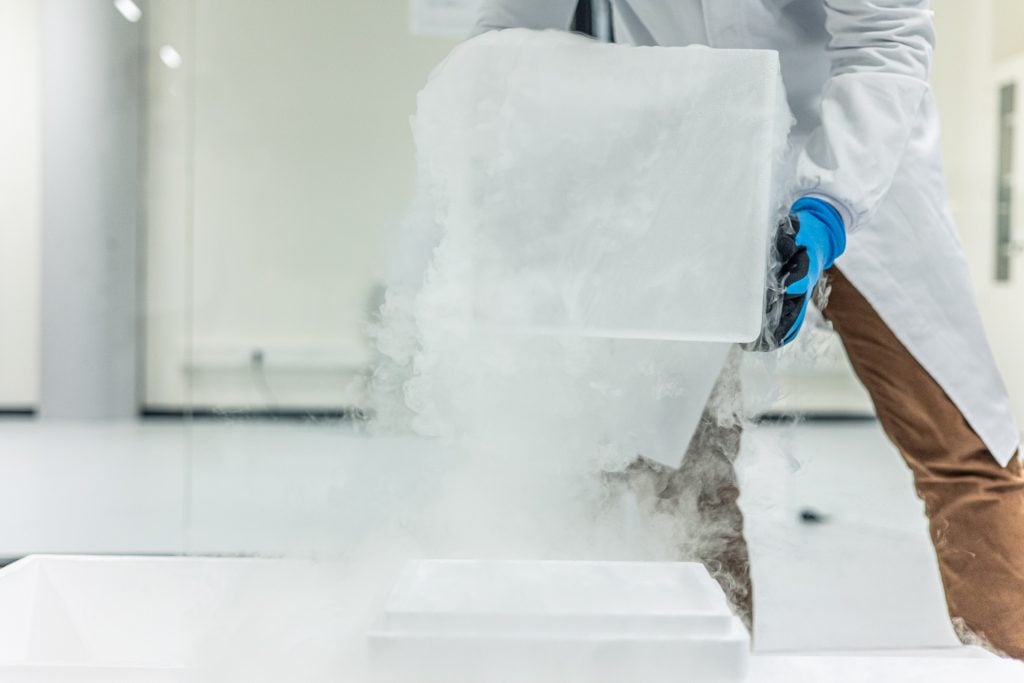Dry ice | Use of dry ice | Dry ice as a coolant
Dry ice, the frozen carbon dioxide (CO2), has established itself as an innovative and extremely effective coolant in various applications. It is a white, solid material that sublimates at -78.9 °C, i.e. it passes directly from the solid to the gaseous phase without first melting. This property makes dry ice a very efficient coolant, as it releases a considerable amount of cold during sublimation, allowing food, medical products or chemical substances to be kept cool for long periods of time.

One of the main advantages of dry ice compared to conventional ice is the fact that it leaves no liquid behind. Whereas with normal ice there is a risk of the melting liquid dissolving or damaging containers, dry ice evaporates completely and leaves no residue. This is particularly beneficial in areas such as the food industry, where hygiene and cleanliness are top priorities.
In the pharmaceutical and biotech industries, dry ice plays a crucial role in the transportation of temperature-sensitive products. Vaccines, biological tissue and other sensitive materials often need to be stored at controlled temperatures to ensure their effectiveness. Dry ice enables uniform cooling and minimizes the risk of temperature fluctuations during transport.


Dry ice is also increasingly being used in the event and catering industry. Here it is often used for impressive visual effects, for example in cocktails to create a cool fog effect or at events to create a special atmosphere. The spectacular clouds of vapor created by sublimation attract attention and can add a creative touch to any celebration.
Handling dry ice also requires careful handling. Due to the extremely low temperatures, frostbite can occur and handling should always be carried out with suitable protective gloves. In addition, dry ice produces carbon dioxide gas during sublimation, which is why adequate ventilation is necessary to avoid the risk of carbon dioxide accumulating in enclosed spaces.
Useful information about dry ice, dry ice blasting machines, dry ice blasting systems and dry ice cleaning is conveniently available in our quarterly “Dry Ice News”. Please add your e-mail address to register without obligation. You can revoke your consent at any time with effect for the future. For information on the processing of your data, including for the improvement of our services, please refer to our data protection information.
You can reach us during our office hours (08:00 to 16:00) by telephone on +49 61 51 / 60 66 82 0



You need to load content from reCAPTCHA to submit the form. Please note that doing so will share data with third-party providers.
More Information